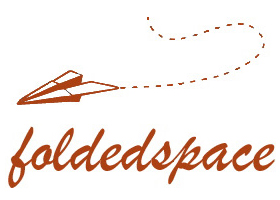I’ve written before about the planned trolley trail in our neighborhood. Kris and I attended a community meeting last week to learn more about the project.
A standing-room only crowd gathered in the Oak Grove Elementary gymnasium to hear discussion. The organizers erected a number of exhibits detailing the history of the trolley (which began operation in 1893 and ran until 1958), the status of the project, and the proposed route of the trail from Milwaukie to Gladstone. The highlight was an enormous 30-foot long aerial view of the trail. It was simply amazing to see the six-mile route in so much detail.
Project Status
The plans are done. The design and engineering phase has begun. The design process will go through the winter. Thirty percent of the design should be completed by spring, at which time there will be another community meeting.
“We do have funding for about half of the project,” said one of the organizers. “There’s a grant process going on now with Metro. We’ve applied for a grant to fund the balance of the project.”
The Friends of the Trolley Trail sent seven people to METRO meetings once a week for six months in 2000, asking them to use the money they’d already collected from a 1995 bond measure in order to use it for its intended purpose: to purchase the right-of-way. The trail is now a public right-of-way, whether it’s actually open and passable or not. But it should all now be passable. Said one spokesman, “Six miles between the Gladstone city limits and Park Avenue were opened up four weeks ago…You can now walk six miles.”
The selling point to Metro was that the trail would create a twenty mile loop. The I-205 Trail connects to the Springwater Trail connects to the Trolley Trail, which winds back to Oregon City where you can return to the I-205 trail.
Neighborhood Reaction
I was surprised to learn that not everyone is in favor of the trail. An informal poll of those in the gym showed about 75-80% support. Those who are opposed don’t seem strongly opposed — they simply have some concerns that they want addressed.
Some questions and answers from the meeting:
What about trespassing? Loose dogs? Motorcycles? The designers will do their best to create buffers, including fencing and vegetation. This is something that will be worked on as the project develops.
What about bathrooms? There’s a restroom at the Jefferson street boatramp. There’s a portable restroom at Risley Park. There’s a planned restroom at Naef road, at the family park. It will be easily accessible.
What about garbage? There will be some trash cans. The planners are hoping for people to adopt portions of the trail. There are already volunteers willing to do this.
People are already dumping couches, washing machines, etc. on the trail. Metro is picking the stuff up. What happens later? This problem will go away as the trail takes shape. People dump now because it’s not developed and used. Self-policing will go a long way to solve this, too.
How soon will there be signage? There is no signage planned until the design process is finished.
Who picks up the garbage in the wetlands down by Boardman? What’s being done to protect the wetlands? It’s part of the process. The garbage will go away, like the dumping will go away. “When you get more bikers, runners, etc. on the trail all the time, there’s actually less garbage because the users force out the indigents. The users also have greater ownership.” The wetlands are being considered. There will be a bridge over them, which should help some.
What about the motorcycles that are going up and down the trail between Naef and Vineyard? There will need to be barriers erected to keep motorized vehicles out. In the beginning, there was a real problem with motorcycles on the Springwater Trail. But the volunteers formed a network who would call each other, and any rider would find himself faced with five angry residents.
Will there be any sort of security? “Patrol is definitely an issue we have to address.”
What about lighting? There are pros and cons to lighting. Lighting can provide some degree of safety, but it also is a nuisance to neighbors, and can be an advertisement that “hey, there’s a trail here!” when you really don’t want people on it.
Where’s the money for annual upkeep going to come from? A combination of volunteers and North Clackamas Park District.
Will the trail ever connect to Springwater? There are discussions to extend the Springwater Trail down 17th, which would bring it to the north end of Milwaukie. (The Trolley Trail starts at the south end of Milwaukie.)
Conclusion
I was amazed to see so many people at the meeting. It’s clear that the trail has wide support, but there are still some concerns that need to be addressed. Personally, I can’t wait to be able to zip up and down the thing on my bike!
